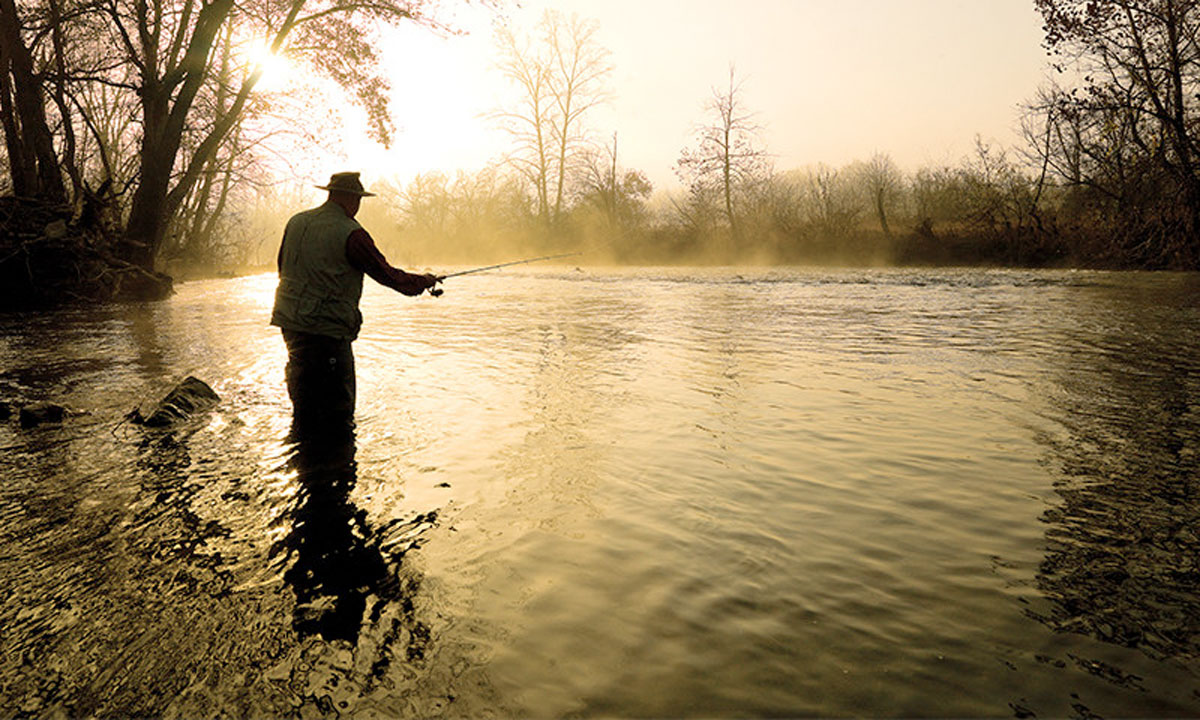During the past week, we have had a rain event (an inch and a half here in Cotter), warm temperatures and moderate winds. The lake level at Bull Shoals fell three and two tenths feet to rest at four tenths of a foot above power pool of 661 feet. This is thirty three and six tenths feet below the top of flood pool. Upstream, Table Rock Lake fell four tenths of a foot to rest at four and two tenths feet below power pool and eighteen and two tenths feet below the top of flood pool. Beaver Lake fell two tenths of a foot to rest at five tenths of a foot below power pool or nine and one tenth feet below the top of flood pool. On the White, we have had no wadable water. Norfork Lake fell one and three tenths feet to rest at seven tenths of a foot above power pool of 555.75 feet and twenty three and five tenths feet below the top of flood pool. On the Norfork, we have had more wadable water.
The water level for the top of power pool has been reset higher for all of the lakes in the White River system. Most of the lakes in the White River system are now below or near power pool. With the current lake levels, we can expect high water for a few weeks. The prediction for the lakes to reach power pool has been updated to August 24. At the time I wrote this the current releases were not available for the dams. I used the most current information that I could locate.
On the White, the hot spot has been Rim Shoals. We have had lower flows in the morning that have been fished well. The hot flies were Y2Ks, prince nymphs, zebra midges (black with silver wire and silver bead or red with silver wire and silver bead), pheasant tails, copper Johns, pink and cerise San Juan worms, gold ribbed hare’s ears and sowbugs. Double fly nymph rigs have been very effective. Try a cerise San Juan worm with a pheasant tail nymph.
Crooked Creek and the Buffalo River are low. With hot temperatures, the smallmouths are less active. The most effective fly has been a tan and brown Clouser minnow. Carefully check the water level before entering Crooked Creek or the Buffalo River. There are no dams on these streams. They both have large drainages and are prone to flooding during and following any rain event. The water can rise very quickly.
There has been more wadable water on the Norfork in the morning. The most productive flies have been small midge patterns like zebra midges (black or red with silver wire and silver bead). Grasshoppers have produced fish, particularly when used in conjunction with a small nymph dropper (try a size 20 black zebra midge). Double fly nymph rigs have been very effective. Try a small bead headed nymph (zebra midge, copper John or pheasant tail) suspended eighteen inches below a brightly colored San Juan worm (hot fluorescent pink or cerise). The fishing is much better in the morning and late afternoon and tapers off midday.
Dry Run Creek has fished moderately. School is back in session and the creek is not as busy. Weekends can get a quite crowded. The hot flies have been sowbugs, various colored San Juan worms (worm brown, red, hot fluorescent pink and cerise) and white mop flies. Small orange or peach eggs have been very effective. Be sure and carry a large net, as most fish are lost at the net.
The water level on the Spring River is fishable. This is a great place to wade fish, when they are running water on the White and Norfork Rivers. Canoe season is in full swing and the boats and rafts are here. Be sure to wear cleated boots and carry a wading staff. There is a lot of bedrock that can get very slick. The hot flies have been olive woolly buggers with a bit of flash, cerise and hot pink San Juan worms and Y2Ks.
Remember that the White and Norfork Rivers and Dry Run Creek are infected with didymo, an invasive alga. Be sure and thoroughly clean and dry your waders (especially the felt soles on wading boots) before using them in any other water. Many manufacturers are now making rubber soled wading boots that are easier to clean and are not as likely to harbor didymo.
John Berry is a fly fishing guide in Cotter, Arkansas and has fished these local streams for over forty years.



